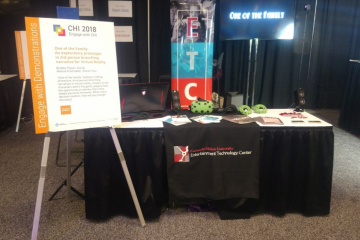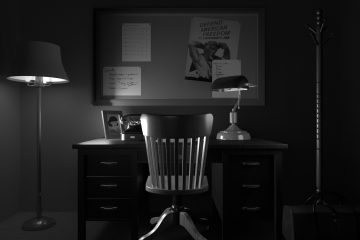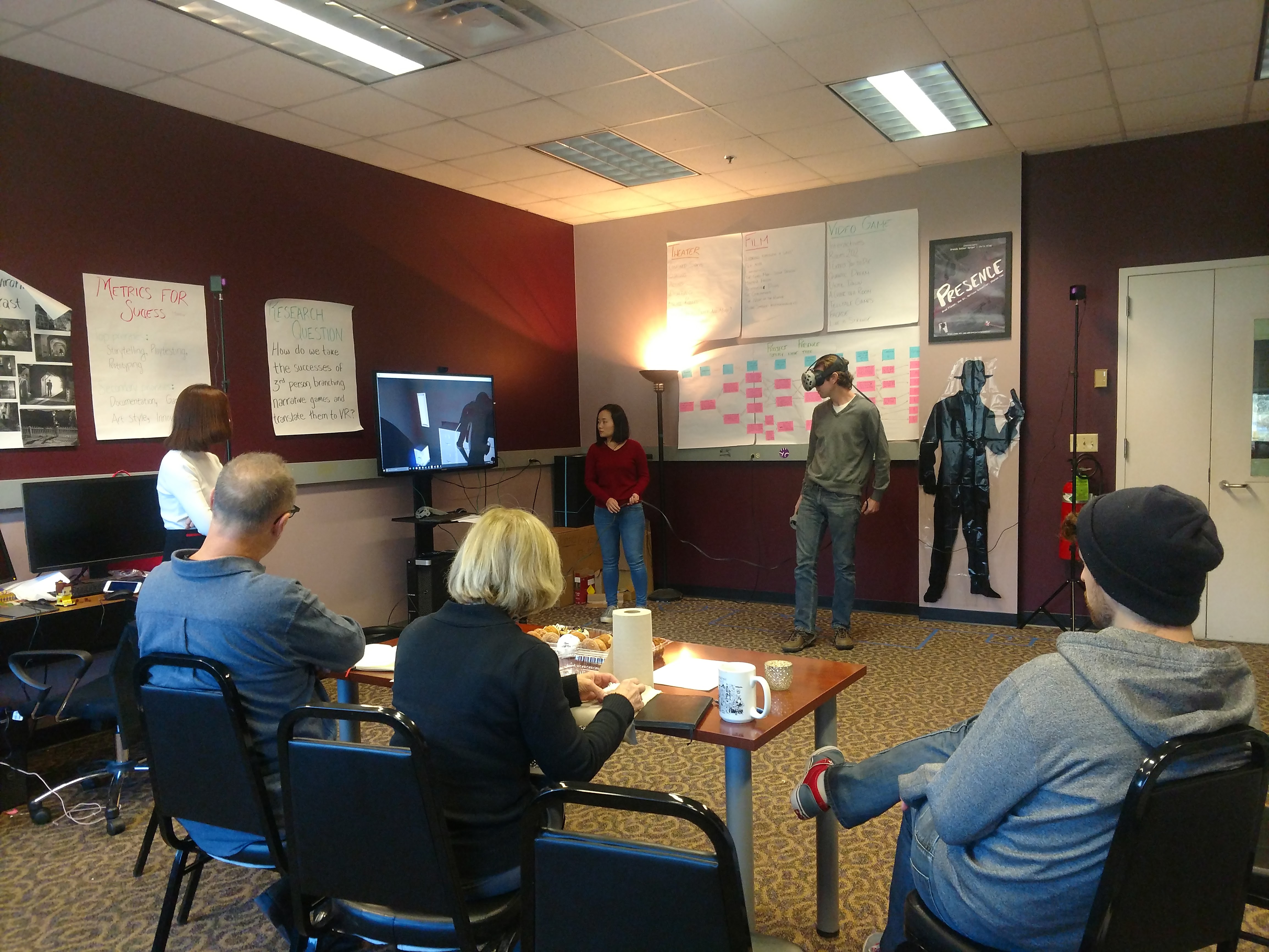We are nearing what the Entertainment Technology Center calls “Quarters.” At the 1/4 mark in the semester, teams present to the faculty their projects as they exist thus far, and get feedback on where the students might be able to improve on process. Some teams use this as a chance to get recommendations on direction, pitching more than one design idea. Others run concept art by the art faculty to get help assessing scope.
Our team has identified two different areas where we will want feedback. The first is character design. The second, and the one for which we wanted the most advice, is interactive design. However, in order to get to the point where the groups visiting our room, we need to make sure everything about our design is SUPER clear.
To do this, we first have to formally identify a research question. Up until this point we had one that we all theoretically understood, but with articulation being half the battle, we made sure to formulate a proper design goal:
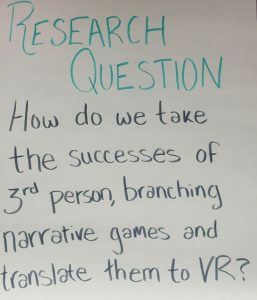
A poster we put on our wall
What are the successes of 3rd person narrative games –games where players are not assigned to a single character, but instead to multiple as a manipulator of the narrativ– and how do we translate them to VR?
Once that goal for the semester was established, we needs to demonstrate the metrics by which we will judge our success. With story and quality of game being obvious, we also want to make sure we are learning best practices for designing VR games in this space. We want to promise the faculty both a deliverable and a design document.
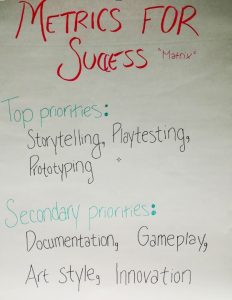
Also on the wall
As we stated last week, playtesting is going to be essential to our learning process. After our meeting with Shawn, we determined a 5-stage playtesting schedule for the semester.
- Table reads of the script: A test of the quality of story and sense of player impact on the narrative
- “Brown box” playtest: A test where we build out a physical version of the environment and test actor placement, narrative pacing, story perception, and efficacy of choice options
- Live VR playtest: A test of the interactions. We will be using HTC Vive Trackers to puppeteer the characters in VR, allowing us to incorporate story before we even have animations to implement. That way we can start messing around efficacy of interface.
- VR playtest with placeholder animations: Once the character models are fully rigged, we will implement them using placeholder animations. From here, we will simply be making small iterations on design.
- VR playtest with motion capture: At this point, we will simply be refining the design.
Since we are already preparing for both Brown Box playtesting and live VR playtesting at the moment, we’re hoping we will be able to show them both!
![]()
By Friday the room was decorated with information, the brown box build in-progress, and the live VR build ready to demo. We can’t wait to show the faculty!
